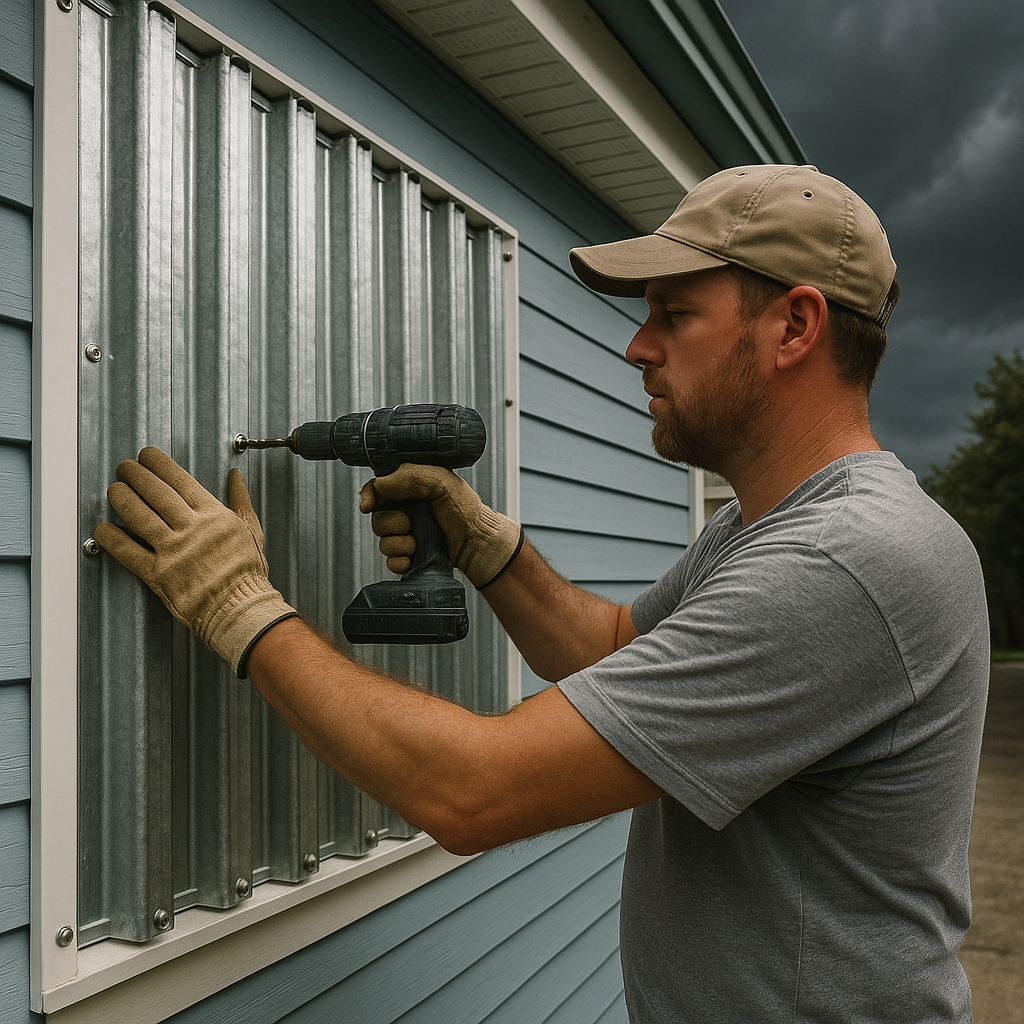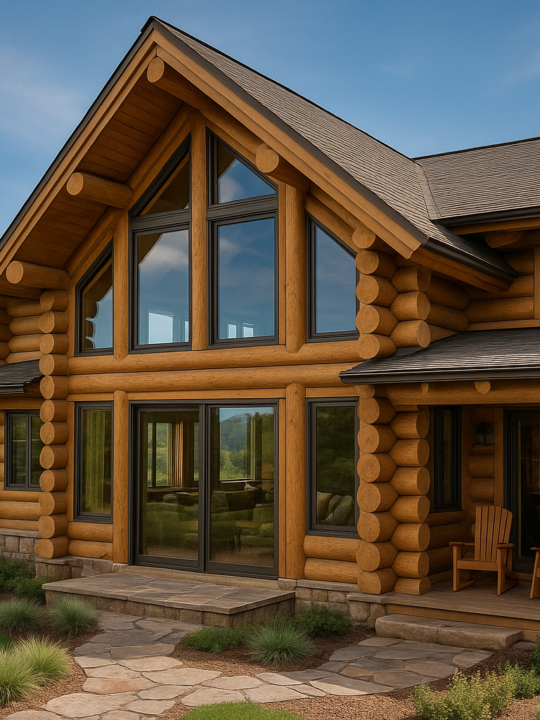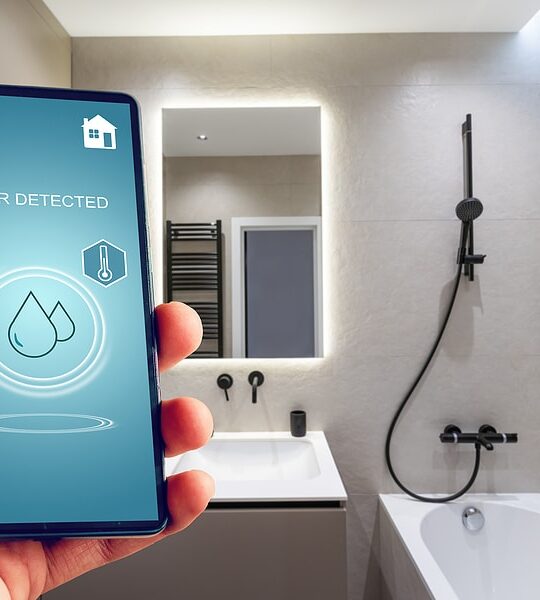Hurricane season brings the same stress every year for coastal homeowners. The forecasts start rolling in, and suddenly there’s this pressure to do everything possible to protect the house. The problem is that comprehensive storm protection can cost tens of thousands of dollars, which most people simply don’t have sitting around. The good news is that meaningful preparation doesn’t require doing everything at once or maxing out credit cards. Strategic improvements at different price points can significantly reduce storm damage risk.
Table of Contents
The Free and Nearly Free Basics
Before spending any money, there are preparations that cost almost nothing but make a real difference. Trimming trees and removing dead branches eliminates projectiles that could smash through windows or damage roofs during high winds. Those palm fronds piling up in the yard become dangerous debris in 100 mph winds. Cleaning gutters and downspouts ensures water drains properly instead of backing up under roof edges or pooling around the foundation.
Taking photos and video of the home’s exterior and interior creates documentation for insurance claims if damage occurs. This takes maybe an hour but proves invaluable when trying to remember what condition things were in before the storm. Walking around the property to identify and remove loose items that could become airborne prevents them from damaging the home or the neighbor’s property.
Checking existing supplies is another no-cost step. Most homes already have flashlights, batteries, and basic tools scattered around. Gathering them into one accessible location and verifying they work means not scrambling at the last minute when stores are packed and shelves are empty.
The Under $500 Improvements
Moving into modest spending territory, several improvements provide solid protection without requiring major investment. Heavy-duty tarps and bungee cords for securing outdoor furniture and equipment cost maybe $100 total. These items can be reused season after season and prevent patio furniture from becoming projectiles.
Sandbags or flood barriers for door thresholds run about $50 to $150 depending on how many doors need protection. Water intrusion causes massive damage even when wind damage is minimal. Keeping that first surge of water from entering the home protects flooring, baseboards, and everything stored at ground level.
A generator is where costs start climbing but still fall within reach for many households. Small portable generators that can run a refrigerator, some lights, and charge phones cost $400 to $800. This won’t power the whole house but prevents food spoilage and maintains basic function during extended outages. The generator pays for itself the first time it prevents losing $300 worth of groceries.
Battery-powered or hand-crank emergency radios cost $30 to $60 and provide access to weather updates and emergency broadcasts when cell towers go down. This sounds old-fashioned in an age of smartphones, but when the power’s out and cell service is spotty, having a radio that works without infrastructure becomes incredibly valuable.
The $500 to $2,000 Range
This budget level opens up more substantial protective measures. Permanent storm shutters for the most vulnerable windows, typically those facing the direction storms usually approach from, might cost $1,000 to $2,000 installed. This doesn’t protect every window but shields the ones most at risk. Even partial coverage significantly reduces the chances of catastrophic interior damage from wind-driven rain.
A whole-house surge protector installed at the electrical panel costs $300 to $500 including installation. Power surges during and after storms destroy electronics, appliances, and HVAC systems. One major surge can cause $5,000 or more in damage, making the surge protector one of the better investments available.
Reinforcing garage doors with bracing kits runs $200 to $400 for materials and maybe another $200 to $400 for installation if not doing it yourself. Garage doors are often the weakest point in a home’s exterior envelope. When they fail, wind pressure inside the garage can lift the roof or blow out other parts of the structure. Strengthening the garage door prevents this domino effect.
For homes in flood-prone areas, a sump pump with battery backup costs $800 to $1,500 installed. When water does get into crawl spaces or basements, having a way to pump it out before it rises prevents the kind of water damage that requires major remediation.
The $2,000 to $10,000 Investment Level
Getting into more serious spending territory, impact-resistant windows for the most exposed areas of the home fall into this range. Full home window replacement might cost $15,000 to $30,000, but focusing on the most vulnerable windows, typically the largest ones or those in the path of prevailing storm winds, brings costs down to $3,000 to $8,000. Properties considering replacement windows in Tampa often prioritize the windows that face the direction most storms approach from rather than trying to do everything at once.
A permanently installed whole-house generator costs $5,000 to $10,000 including installation. This is a major expense but transforms the experience of riding out storm aftermath. Instead of sweating in the dark and watching the refrigerator contents spoil, life continues relatively normally. For families with medical needs requiring power or those who work from home, this moves from luxury to near-necessity.
Metal roof installation runs $8,000 to $15,000 for an average home but provides superior wind resistance compared to shingle roofs. Metal roofs also last 40 to 70 years compared to 15 to 25 for asphalt shingles, so the higher upfront cost spreads out over decades of use. The wind resistance during storms is just one benefit among many.
What Actually Provides the Best Value
If forced to prioritize with limited funds, the focus should go to preventing catastrophic damage rather than eliminating all possible damage. Protecting windows from breach is priority one because once wind and water get inside, damage escalates exponentially. A broken window can lead to roof failure, wall damage, and destruction of interior contents worth far more than the cost of storm shutters or impact glass.
Securing large openings comes next. Garage doors and sliding glass doors create huge vulnerabilities if not properly reinforced or protected. The relatively modest cost of bracing or shuttering these openings provides disproportionate protection.
Having a plan for water management matters more than many people realize. Wind gets the attention, but water causes more total damage in most storms. Ensuring gutters work properly, ground slopes away from the foundation, and vulnerable thresholds have flood barriers prevents thousands in water damage.
Generator decisions depend heavily on individual circumstances. For some households, a small portable unit is plenty. Others truly need whole-house power due to medical equipment, home businesses, or simple inability to cope with heat when air conditioning goes out for days. There’s no universal right answer here.
The Long Game Approach
Few homeowners can afford to do everything in one season. The smart approach is making steady progress over several years. This season might mean storm shutters for the front windows and a portable generator. Next year could bring garage door reinforcement and a surge protector. The following year might fund the most vulnerable window replacements.
Starting with the free preparation steps while budgeting for one or two paid improvements each year eventually results in a well-protected home without the financial shock of trying to do it all at once. The key is doing something rather than being paralyzed by the impossibility of doing everything. Each improvement reduces risk and provides peace of mind when the next storm approaches.
Insurance coverage deserves review too. Understanding exactly what the policy covers and what it doesn’t helps identify which gaps need addressing through physical improvements versus additional coverage. Sometimes paying a bit more for better insurance makes more sense than expensive physical upgrades, depending on the specific risks and coverage gaps.







